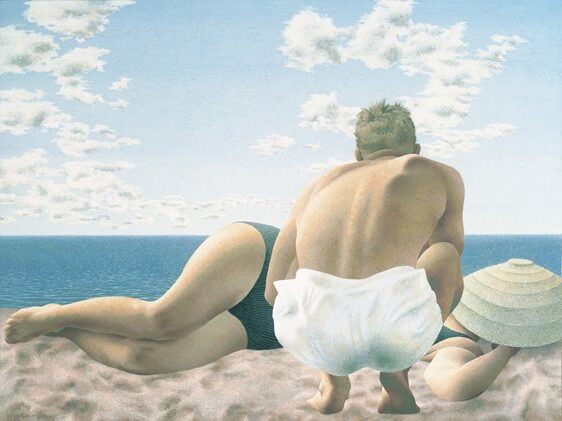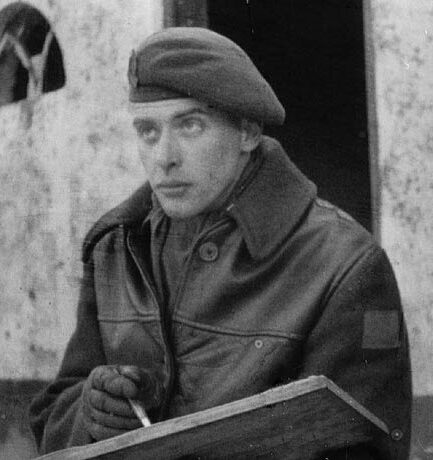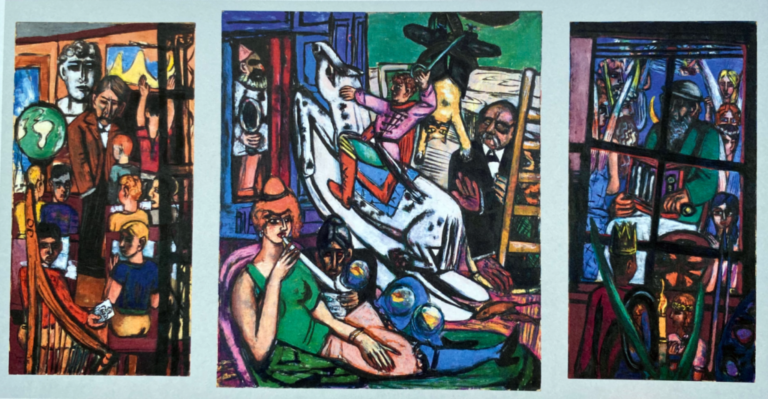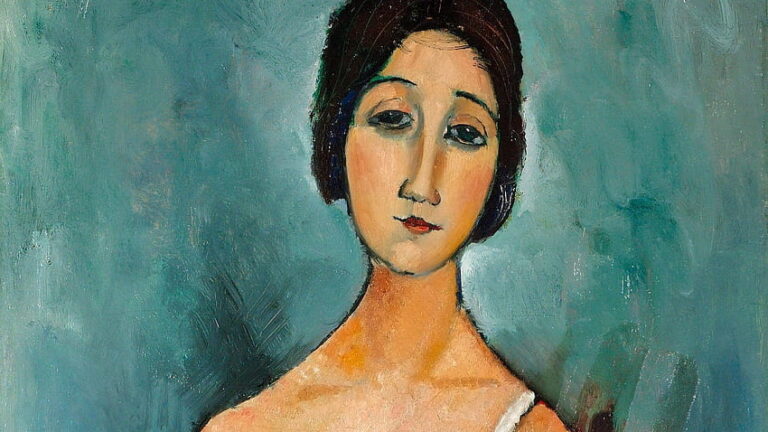Alex Colville Paintings: Iconic Masterpieces of Realism
Born: August 24, 1920, Ontario, Canada
Death: July 16, 2013, Nova Scotia, Canada
Art Movement: Precisionism, Contemporary Realism
Nationality: Canadian
Influenced by: Stanley Royle and Sarah Hart
Institution: Mount Allison University
Alex Colville Paintings: Iconic Masterpieces of Realism
Life and Education of Alex Colville
Alex Colville’s journey from a boy growing up in Toronto to a renowned artist is marked by his education and wartime experiences. His early life and studies shaped his future in art, while his service as a war artist deeply influenced his creative vision.
Early Years and Education
Alex Colville was born in Toronto, Ontario, on August 24, 1920. As a young boy, he moved with his family first to St. Catharines and later to Amherst, Nova Scotia, which became his long-term home.
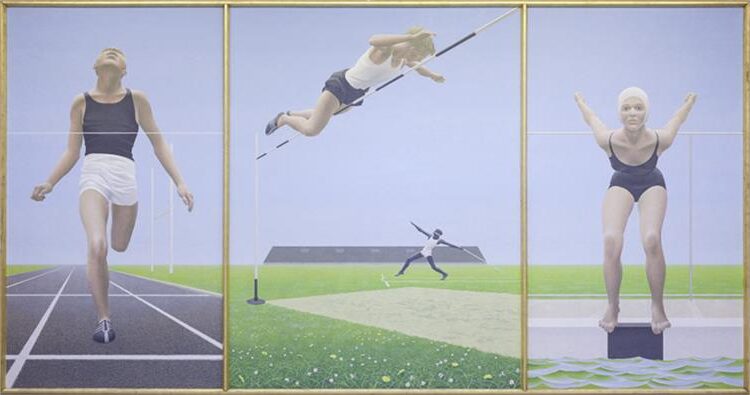
Athletes (1960) by Alex Colville
His interest in art began to take shape in Amherst, where he attended weekly art classes. These early lessons provided him with a foundation that he would build upon in his later years.
Colville furthered his education at Mount Allison University in New Brunswick, studying fine arts from 1938 to 1942. His time there was crucial in refining his skills and developing his unique style. He graduated with a Bachelor of Fine Arts, setting the stage for a career that would make significant contributions to Canadian art.
Military Service and War Artistry
Colville’s life took a pivotal turn when he joined the Canadian Army during World War II. His role as an official war artist involved depicting the experiences and aftermath of the conflict through detailed sketches and paintings.
The opportunity to capture wartime scenes provided him with a unique perspective on human emotion and resilience. This experience also honed his attention to meticulous detail, which would later become a hallmark of his work.
His wartime service significantly impacted his artistic themes, focusing on the complexities and nuances of everyday life. It was during this time that he developed a deep understanding of composition, which would influence his post-war artwork.
Academic Achievements and Teaching
After the war, Colville returned to Mount Allison University, where he taught fine arts for several years. This position allowed him to pass on his knowledge and passion for art to the next generation of artists.

To Prince Edward Island (1965) by Alex Colville
He also gained recognition outside academia, receiving numerous honors over his lifetime. He was appointed an Officer of the Order of Canada and later promoted to Companion of the Order of Canada for his contributions to Canadian culture.
Later in life, Colville served as Chancellor of Acadia University in Wolfville, Nova Scotia. This role exemplified his commitment to education and the arts.
Artistic Development and Style
Alex Colville, a prominent Canadian painter, is renowned for his unique blend of realism and magic realism. His works are characterized by meticulous composition and a figurative style that often explores themes of isolation and the everyday.
Evolution of Painting Technique
Colville began his career painting in watercolors and oils, mediums he employed as a war artist. Over time, he transitioned to using tempera for its capacity to achieve precise lines and hard edges.
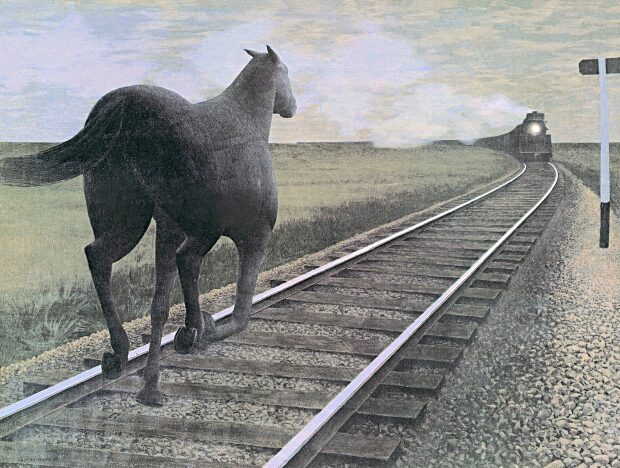
Horse and Train (1954)
This shift allowed him to craft paintings like Horse and Train, celebrated for its geometric precision and emotional depth. His method involved creating numerous sketches before finalizing a composition.
Such meticulous planning highlights his commitment to detail, seeing him evolve from conventional techniques to a more refined, precise approach.
Themes and Motifs
Isolation and the mundane are recurring themes in Colville’s art. His works often depict quiet moments, lending a sense of tranquility but also unease. Paintings like Horse and Train reflect this duality, showing the tension between movement and stillness.
His choice of motifs, such as domestic scenes or deserted landscapes, emphasizes the beauty in simplicity. This focus on ordinary subjects invites viewers to find meaning in everyday life, a hallmark of his magic realism approach.
Influences and Comparisons
Colville’s work often draws comparisons to American Precisionists. Like Hopper, he emphasized stark detail and composition. His paintings are distinct, yet they resonate with broader artistic movements.

Artist and Car (2008) by Alex Colville
Influences from his time as a war artist are evident, shaping his perspective and thematic focus. The Art Gallery of Nova Scotia and other institutions house his works, celebrating his contribution to Canadian and international art. His figurative style and thematic consistency mark him as a unique voice in the art world.
Significant Works and Recognition
Alex Colville was a prominent Canadian artist known for his unique style and detailed paintings. His work received international acclaim and was showcased in major exhibitions. This section explores some of his most notable paintings, the awards he received, and his exhibitions in prestigious galleries around the world.
Noteworthy Paintings
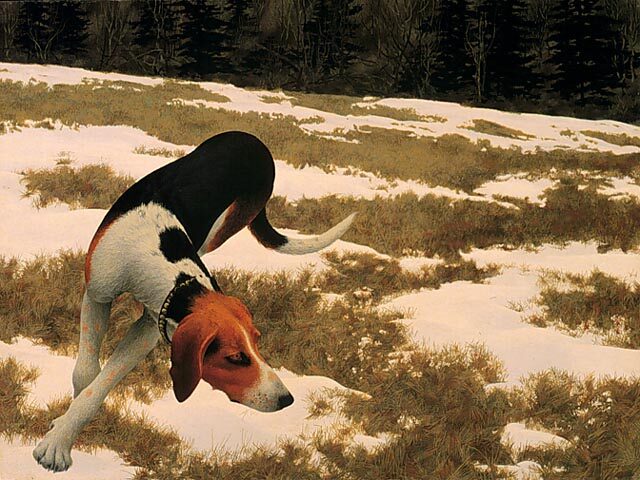
Hound in Field (1958) by Alex Colville
Alex Colville’s paintings often depicted everyday scenes with a sense of tension and mystery. “Hound in Field” and “Pacific” are two of his well-known pieces, capturing serene moments with underlying unease. “Man on Verandah” and “Moon and Cow” also exemplify his signature style of Precisionism, where everyday subjects are infused with a high level of detail and carefully composed elements. These paintings often evoke strong emotional responses from viewers, showcasing Colville’s ability to blend realism with a deeper narrative.
Awards and Honors
Throughout his career, Colville was recognized with numerous awards for his contributions to art. He was appointed as an Officer of the Order of Canada, later promoted to Companion in 1982, reflecting his impact on Canadian culture. He represented Canada at the Venice Biennale, a prestigious international art exhibition, further establishing his reputation. Colville’s work and influence were celebrated with several honorary doctorates from Canadian universities, highlighting his significant role in both national and international art circles.
Gallery and Museum Exhibitions

In the Woods (1976) by Alex Colville
Colville’s work was displayed in prominent venues, such as the National Gallery of Canada. One major exhibition was the retrospective organized by the Art Gallery of Ontario in 2014, which also traveled to Ottawa. His paintings have been part of various international exhibitions, broadening his audience and influence. The Bergen-Belsen Concentration Camp inspired some of his early and powerful works, which were part of historical exhibitions. Major art institutions, like the Art Gallery of Nova Scotia and Cape Breton University Art Gallery, house his paintings, ensuring his legacy continues to be accessible to new generations of art enthusiasts.
Colville’s Cultural Impact and Legacy
Alex Colville significantly influenced Canadian culture and achieved international acclaim through exhibitions in prominent galleries. He is celebrated for his unique ability to blend everyday subjects with deeper, mythic meanings in his artwork.
Influence on Canadian Culture
Colville’s work left a lasting imprint on Canadian art and education. As a painter who documented everyday life, he emphasized themes of love and identity. Even during the rise of abstract art, he maintained a figurative approach. His detailed depictions resonated deeply with Canadians.
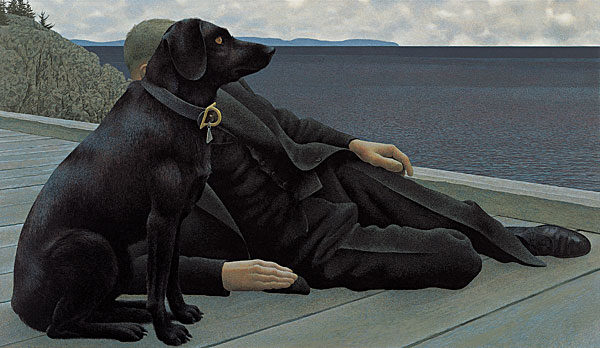
Dog and Priest (1978) by Alex Colville
His association with Visual and Media Arts fortifies his cultural importance in Canada. As an educator, Colville shaped many young artists, reinforcing his role in advancing Canadian art culture. His work has become a core feature of Canadian collections, symbolizing national identity and narrative.
International Acclaim and Exhibitions
Colville’s work gained global attention, displaying in notable galleries such as the Tate Gallery and the Museum of Modern Art. His pieces often integrate elements of everyday life, casting a universal appeal. International exhibitions included shows at the Musée National d’Art Moderne and the Centre National d’Art et de Culture Georges Pompidou, cementing his status as a world-renowned artist.
He also exhibited at venues like the Wallraf-Richartz Museum and the Kestnergesellschaft near the River Spree. These exhibitions further broadened his appeal, allowing his influence to extend beyond Canadian borders. Through these international platforms, Colville fostered a global appreciation for his art.
Artistic Process and Studio Practice
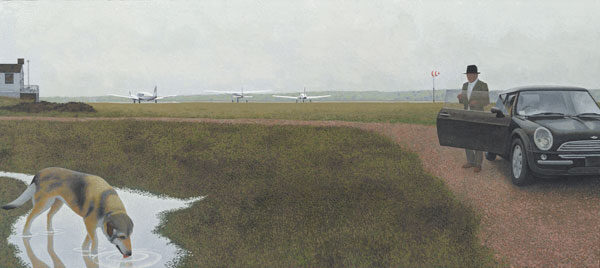
Waterville (2003) by Alex Colville
Alex Colville, a noted Canadian painter, was known for his precision and methodical approach. His work often reflected his time as a war artist. His process evolved through detailed preparation and careful studio organization.
Creative Process and Techniques
Colville’s creative process often began with sketches. These sketches served as references for his paintings, which included everyday scenes and war memories from his time with the Royal Canadian Navy. He was influenced by the Post-Impressionists, incorporating both realism and abstraction in his work.
His meticulous approach included transforming compositions into geometric schemes before moving to live drawings. He often used Rapidograph pens for precision. This combination allowed Colville to merge realistic detail with carefully planned layouts, a technique that became his signature.
The Studio Environment
Colville’s studio played a crucial role in his artistic output. His studio at Mount Allison University was well-organized, providing a space where creativity could thrive. Materials from his studio are now displayed for public viewing, showcasing his distinct method of working.
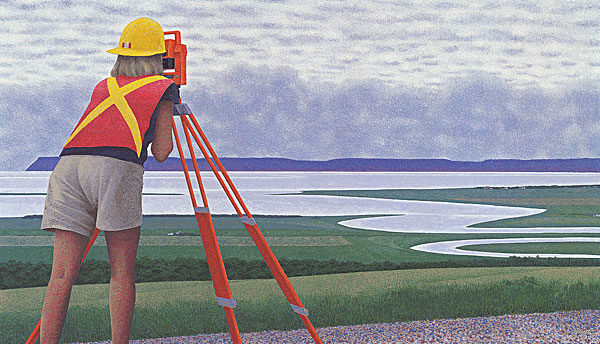
Surveyor (2001) by Alex Colville
From 1949 to 1973, Waterville became a pivotal location for Colville. The studio there was equipped to cater to his focus on composition and detail, features that appeared in tours like the International Touring Retrospective. His works were later exhibited in esteemed venues such as the Owens Art Gallery and Montreal Museum of Fine Arts, demonstrating the impact of his studio practice on his celebrated pieces.
Frequently Asked Questions
Alex Colville’s paintings highlight themes of realism and precision, exploring the ordinary with a hint of tension. His background and techniques set his work apart, while his exhibitions and art market values tell another part of his story.
What themes are commonly explored in Alex Colville’s artwork?
Alex Colville’s artwork often explores themes of everyday life infused with a sense of mystery and tension. His paintings depict ordinary moments that suggest deeper meanings, giving viewers a glimpse into the complexity of human experience.
How can one authenticate an Alex Colville painting?
Authenticating an Alex Colville painting involves consulting art experts or appraisers familiar with his work. Provenance records, signatures, and exhibition history can also help verify authenticity. Authentication is crucial due to the intricate detail in Colville’s work.
What are some notable exhibitions that featured Alex Colville’s work?
Alex Colville’s work has been featured in prominent exhibitions at institutions such as the Museum of Modern Art (MoMA) and the Art Gallery of Ontario. These exhibitions highlighted his influence on Canadian art and showcased his detailed and thought-provoking pieces.
How has Alex Colville’s background influenced his painting style?
Colville’s background, including his time serving in the military during World War II, greatly influenced his painting style. His experiences added depth to his work, resulting in the meticulous attention to detail and the subtle tension present in his paintings.
What distinguishes Alex Colville’s technique from photorealism?
While Colville’s work features precise detail, it differs from photorealism by focusing on the narrative and emotional undercurrents rather than exact visual replication. His paintings offer a sense of clarity mixed with implied stories that go beyond mere photographic accuracy.
How do market values for Alex Colville’s prints compare to his original works?
The market values for Alex Colville’s prints are generally lower than for his original works. Original paintings often command higher prices due to their uniqueness and the intricate level of detail involved. Meanwhile, prints allow broader access to his art at more affordable prices.

